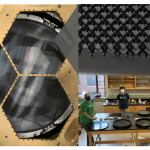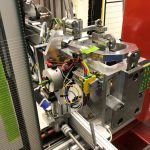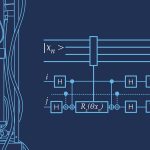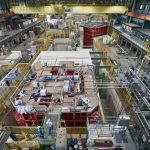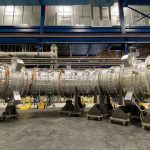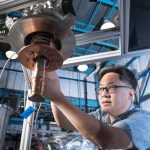From Department of Energy, June 28, 2021: DOE announces $93 million in funding for 71 research projects that will spur new discoveries in high-energy physics. The projects—housed at 50 colleges and universities across 29 states—are exploring the basics of energy science that underlie technological advancements in medicine, computing, energy technologies, manufacturing, national security and more.
detector technology
From Smithsonian Magazine, May 13, 2021: A group of scientists say the phenomenon could indicate dark matter speeding through our world at more than 300 miles a second. Fermilab’s Dan Hooper is quoted in this story about the study of flashes seen in ordinary lightning storms showing evidence of super-dense chunks of dark matter as they zip through our atmosphere.
From AZoMaterials, Feb. 18, 2021: Fermilab scientist Jeff McMahon and his research team have designed a new kind of metamaterials-based antireflection coating for the silicon lenses used in cameras used to capture the cosmic microwave background.
Engineers and technicians in the UK have started production of key piece of equipment for a major international science experiment. The UK government has invested $89 million in the international Deep Underground Neutrino Experiment. As part of the investment, the UK is delivering a series of vital detector components built at the Science and Technology Facilities Council’s Daresbury Laboratory.
From Pesquisa, November 2020: The FAPESP scientific director shares how he encouraged behaviors that helped improve research in São Paulo. With FAPESP encouragement, researchers in Brazil have held leadership positions in international collaborations, including in a photon detection system called Arapuca. Arapuca is a technology used in Fermilab’s Short-Baseline Near Detector and a baseline technology for the international Deep Underground Neutrino Experiment, hosted by Fermilab.
Magnets play a key role in looking for the direct transformation of muons into electrons, a theorized phenomenon that Fermilab’s Mu2e experiment will hunt for when it comes online in 2023. In an important milestone, seven essential magnets have passed testing and been accepted for the construction of the experiment.
Fermilab plays a key role in the Quantum Science Center, led by Oak Ridge National Laboratory. The center unites Oak Ridge’s powerhouse capabilities in supercomputing and materials science with Fermilab’s world-class high-energy physics instrumentation and measurement expertise and facilities. Drawing on their experience building and operating experiments in cosmology and particle physics and in quantum information science, the Fermilab team is engaging in QSC efforts to develop novel, advanced quantum technologies.

